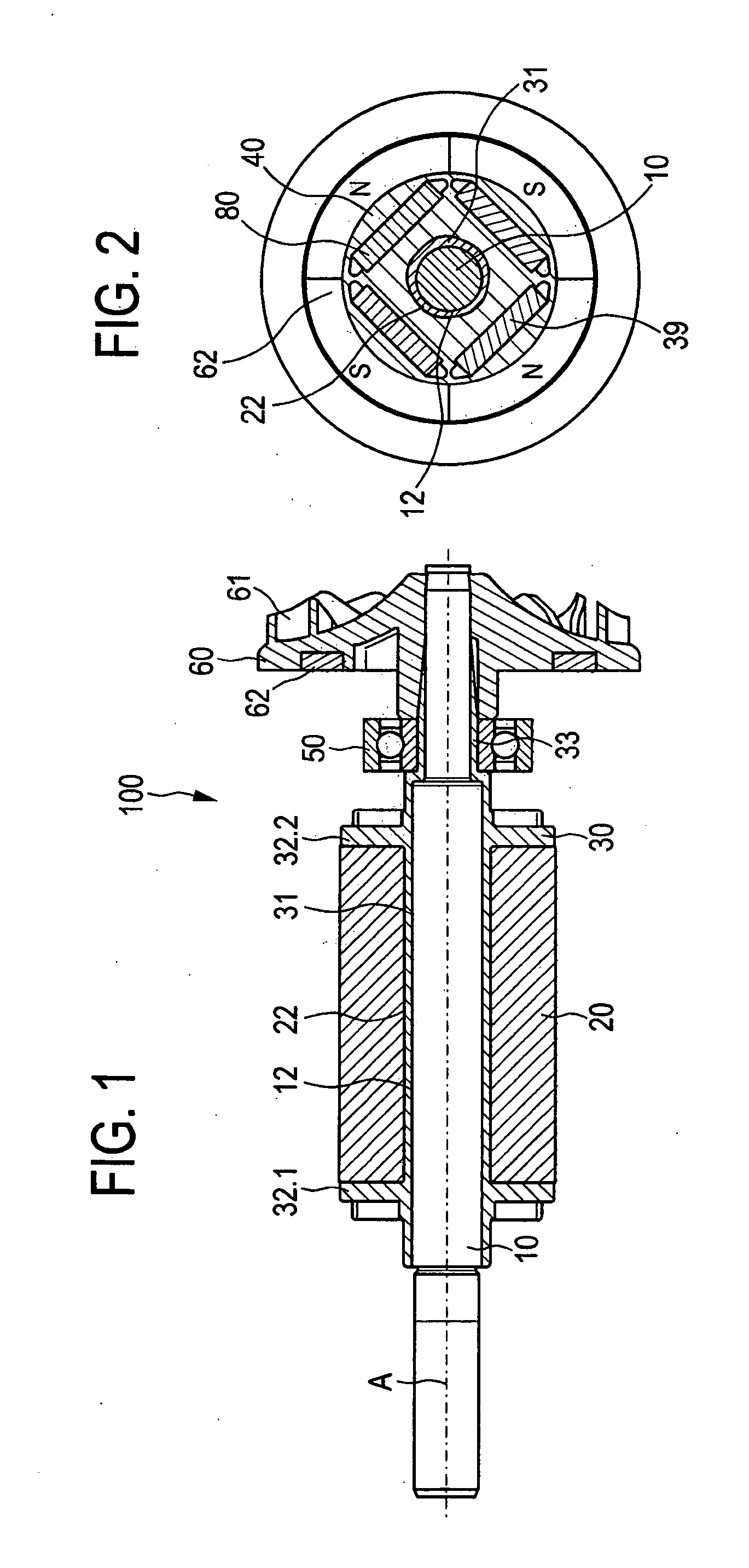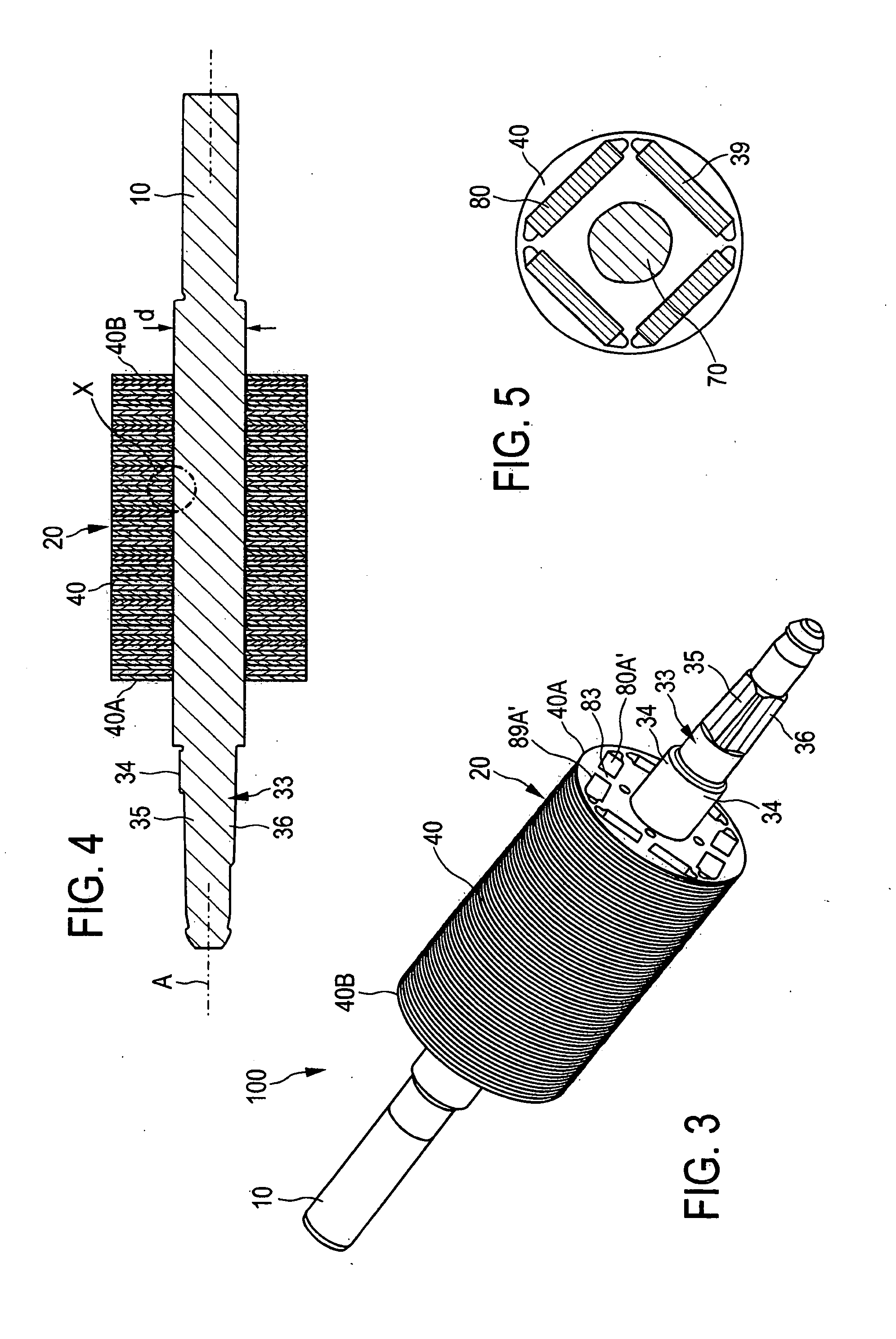Rotor for an electric motor, an electric motor and a production process for an electric motor
- Summary
- Abstract
- Description
- Claims
- Application Information
AI Technical Summary
Benefits of technology
Problems solved by technology
Method used
Image
Examples
Embodiment Construction
[0076]FIG. 1 shows a completely assembled rotor 100 for a permanently excited electric motor 1000, shown in greater detail in FIG. 17, which in the present case is configured as a BLDC electric motor with an arrangement consisting of a rotor 100 and a stator 200. For this purpose—as can be seen in FIG. 17—the rotor 100 is arranged so as to be rotatably and magnetically coupled in a recess of the stator 200. FIG. 1 shows the rotor 100 with a rotor shaft 10 and with a rotor core 20 that is attached onto the rotor shaft 10 and that is made up of a plurality of core laminations 40 also shown in FIGS. 2, 5 and 6. In the present case, the core laminations 40 are stacked along an axis A in order to form the rotor core 20. The recesses 80 (as the receiving structure), that are arranged at four peripheral angular positions as shown in FIG. 2, form a chamber (as the receiving element) in the stacked arrangement of the core laminations 40, each chamber receiving a permanent magnet 39 (as the p...
PUM
| Property | Measurement | Unit |
|---|---|---|
| Fraction | aaaaa | aaaaa |
| Fraction | aaaaa | aaaaa |
| Diameter | aaaaa | aaaaa |
Abstract
Description
Claims
Application Information
 Login to View More
Login to View More - R&D
- Intellectual Property
- Life Sciences
- Materials
- Tech Scout
- Unparalleled Data Quality
- Higher Quality Content
- 60% Fewer Hallucinations
Browse by: Latest US Patents, China's latest patents, Technical Efficacy Thesaurus, Application Domain, Technology Topic, Popular Technical Reports.
© 2025 PatSnap. All rights reserved.Legal|Privacy policy|Modern Slavery Act Transparency Statement|Sitemap|About US| Contact US: help@patsnap.com



